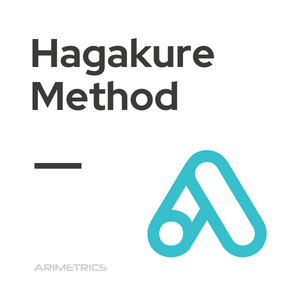
Definition:
The Hagakure method is an approach used in Google Ads to optimize campaigns and increase the effectiveness of a user’s advertising budget. This method involves organizing and segmenting a user’s campaigns into different groups, each with their own individual goals. The goal is to track and compare the progress of each group so that you can make the necessary changes and achieve the desired results.
It’s a great tool for Measure performance and ensure that all campaigns perform at their best. This method requires users to have detailed knowledge of ad text, research Keywords, bid pricing, budget allocation, and other aspects of campaign management to succeed.
How Google Ads worked before the Hagakure method
Before the Hagakure method was introduced, Google Ads used a more traditional approach to optimizing campaigns. This method relied heavily on manual optimization and processes that often left users with inconsistent results.
For example, there was no clear way to segment campaigns into different groups or allocate budgets to each group. As a result, it was difficult to track and compare the performance of different campaigns. In addition, users had to manually adjust bids based on goals and KPIs, which could be time-consuming and ineffective. Finally, analytics were limited, making it difficult for users to monitor their campaigns in real time or detect potential issues.
How to apply the Hagakure method in Google Ads
The Hagakure method in Google Ads is an effective approach to maximizing the performance of a user’s campaigns. To use it effectively, the user must understand and apply the basic principles of the method.
First, it requires users to segment their campaigns into different groups, each of which must have specific goals or KPIs. This will help the user to easily track and compare the performance of each group.
Secondly, users must allocate an appropriate budget to each segment to achieve the desired results. It is important to remember that different keywords and advertising texts require different levels of investment.
Third, users need to be aware of their bids and ensure they remain competitive to maximize the performance of their campaigns.
Finally, users should use analytics to monitor their campaigns and make adjustments as needed. This will help users identify potential problems and take corrective action in time.
The Hagakure method is an effective tool for optimizing campaigns in Google Ads. By understanding the basic principles and applying them correctly, users can maximize the performance of their campaigns and achieve the desired results.
Advantages of the Hagakure method
The Hagakure method in Google Ads provides many advantages to users looking to get the most out of their campaigns.
One of the main advantages of the method is that it allows users to segment and organize their campaigns into different groups. This makes it easy to track and compare performance between different campaigns and budget allocations.
Another advantage is that it allows users to adjust bids quickly and efficiently to remain competitive. This ensures that campaigns are always optimized for maximum performance.
Finally, the method also allows users to track their campaigns in real time through analytics, allowing them to identify potential issues and take corrective action immediately.
Overall, the Hagakure method provides users with a powerful tool to optimize their Google Ads campaigns and maximize performance. By understanding and applying the principles of the method, users can ensure that they get the best possible results.
Drawbacks of the Hagakure method
The Hagakure method in Google Ads can be a powerful tool for optimizing campaigns, but there are also some potential drawbacks to be aware of.
For starters, the method requires users to segment their campaigns into different groups, each with their own specific goals and KPIs. This can make it difficult to effectively and efficiently manage multiple campaigns, especially for those new to the platform.
In addition, the method requires users to track their bids and adjust them regularly to remain competitive. This can be time-consuming, especially when dealing with multiple campaigns.
Finally, while analytics allow users to monitor their campaigns in real time, they don’t always provide enough data to make informed decisions .
